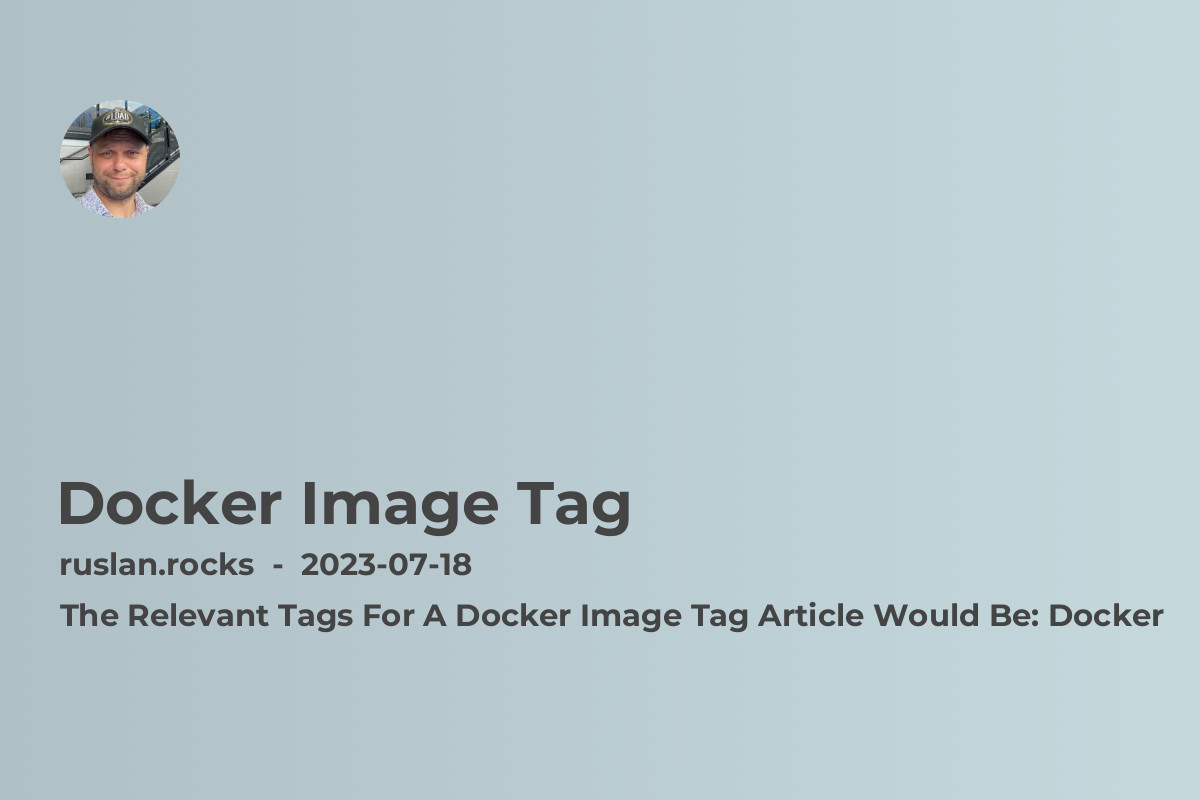- What is a Docker Image Tag?
- Why are Docker Image Tags Important?
- Types of Docker Image Tags
- Best Practices for Docker Image Tagging
- Conclusion

Are you familiar with Docker image tags? If you've ever worked with Docker, chances are you've come across this important concept. Docker image tags play a crucial role in versioning, tagging, and managing Docker images. In this article, we will explore everything you need to know about Docker image tags and how they can simplify your containerized application deployment processes.
What is a Docker Image Tag?
A Docker image tag is a label assigned to a specific version of a Docker image. It helps identify and differentiate different versions of the same image, making it easier to manage and deploy containerized applications. It acts as a unique identifier and allows Docker users to specify which version of an image should be used when running containers.
Here's an example of a basic Docker image tag:
nginx:1.18
In the example above, nginx is the name of the image, and 1.18 is the tag representing a specific version of that image. Tags can be alphanumeric and can include periods and dashes. They provide a convenient way to organize and track different iterations of your Docker images.
Why are Docker Image Tags Important?
Docker image tags are crucial for version control and managing the lifecycle of containerized applications. By assigning tags to different versions of your images, you can easily track and deploy specific releases. This enables you to revert to previous versions if needed, ensuring consistency and reproducibility of your application environment.
Moreover, Docker image tags facilitate collaboration and sharing within your development and deployment workflows. By utilizing tags, you can ensure that everyone is working with the same version of the image, eliminating inconsistencies and potential compatibility issues.
Types of Docker Image Tags
Docker image tags can serve different purposes based on their usage and naming conventions. Let's explore some common types:
1. Version Tags
Version tags are commonly used to denote specific releases of Docker images. They typically follow a numerical pattern, such as 1.0, 2.3, or v1.5.2. Version tags can help you track the history of changes and easily identify different iterations of the same image.
In the case of the nginx image mentioned earlier, the tag 1.18 represents a specific release of the Nginx web server software. By specifying this tag, you ensure that all containers using this image will run the same version.
2. Latest Tag
The latest tag is a special tag that indicates the most recent version of an image. It is typically used when you want to reference the latest stable release of an image without specifying a specific version. However, it's important to note that relying solely on the latest tag for image references can lead to issues during deployment. The latest tag should be used carefully and preferably in combination with version tags to ensure consistency.
3. Branch or Commit-Based Tags
In some cases, Docker image tags are derived from the underlying source code's version control system. For example, you can use Git branch or commit information to create dynamic image tags. This allows you to tie specific Docker images directly to specific code changes, enabling precise version tracking and deployment.
Best Practices for Docker Image Tagging
To maintain a well-organized and easily manageable Docker image repository, it is essential to follow some best practices when tagging your images:
- Use meaningful and descriptive tags that clearly indicate the purpose or version of the image. This helps avoid confusion and ensure easy identification.
- Adopt a consistent naming convention across your organization or project to ensure uniformity and ease of maintenance.
- Combine version tags with descriptive tags and/or metadata to provide additional context about the image's purpose, such as
release-1.0ortesting-2.3. - Avoid reliance on the
latesttag as the sole indicator of the image's version, as it can lead to unexpected updates and inconsistencies in production environments. - Regularly clean up unused or outdated images to prevent clutter and save storage space. Utilize automated scripts or tools to streamline this process.
- Leverage container image registries such as Docker Hub, Amazon ECR, or Google Container Registry to store and manage your Docker images reliably and securely. These registries often provide additional features for version control and image tagging.
Conclusion
In this article, we explored the importance of Docker image tags and their role in versioning and tagging containerized applications. We learned about different types of tags and best practices for effective image management. By following these guidelines, you can ensure smoother deployments, improved collaboration, and easier maintenance of your Docker images.
For more information on Docker best practices, check out the following related articles:
Remember, effective Docker image tagging is the key to streamlined deployment and efficient version control in your containerized application workflows.
